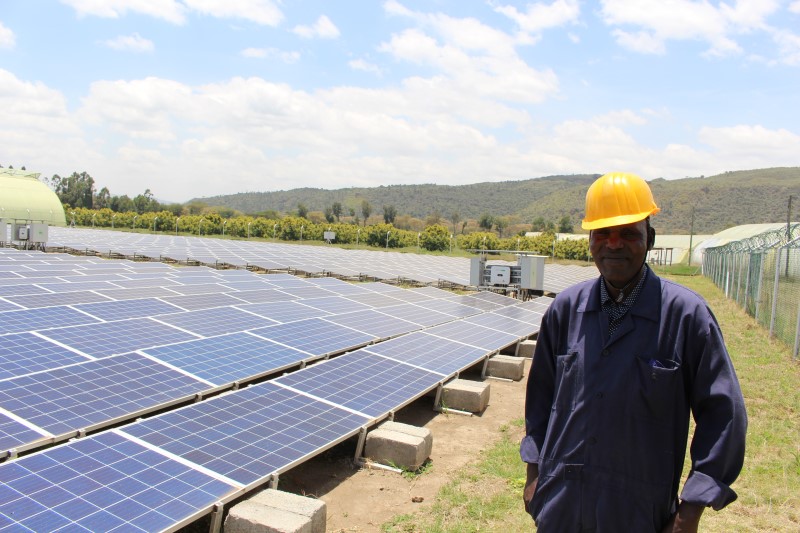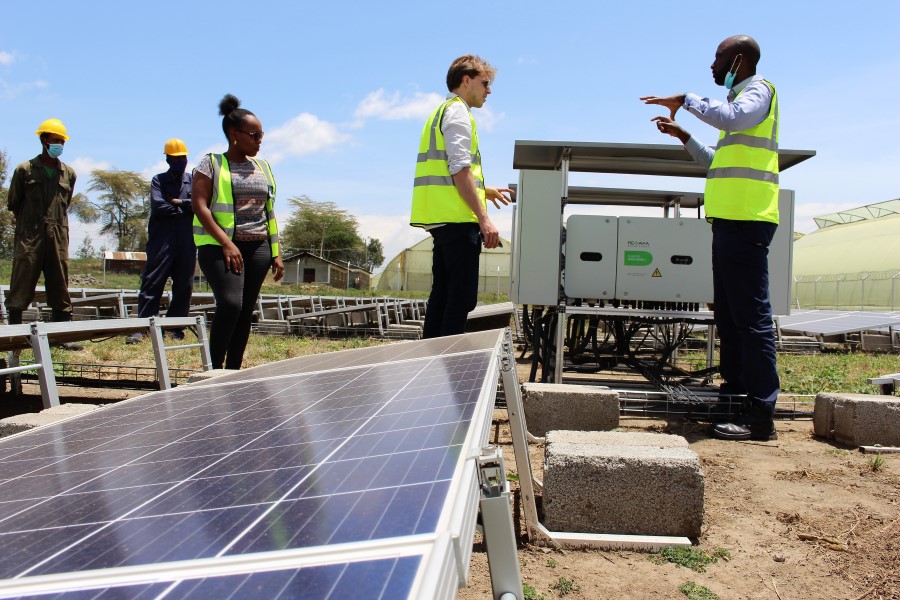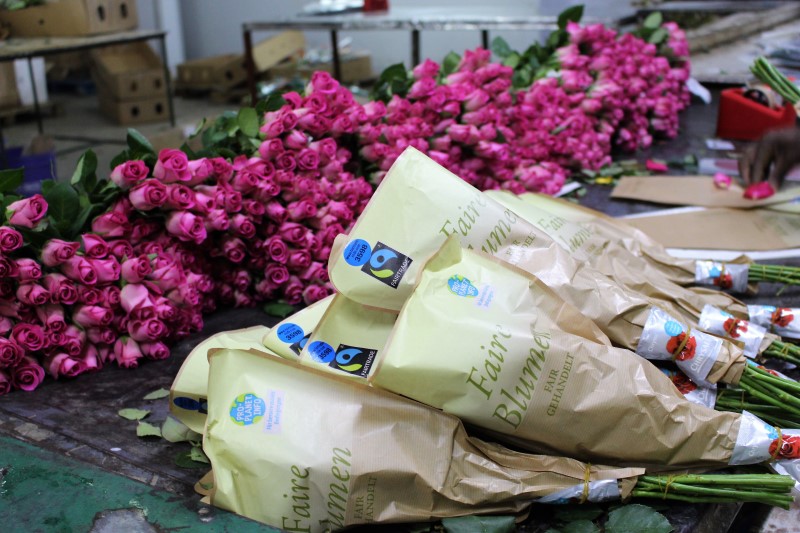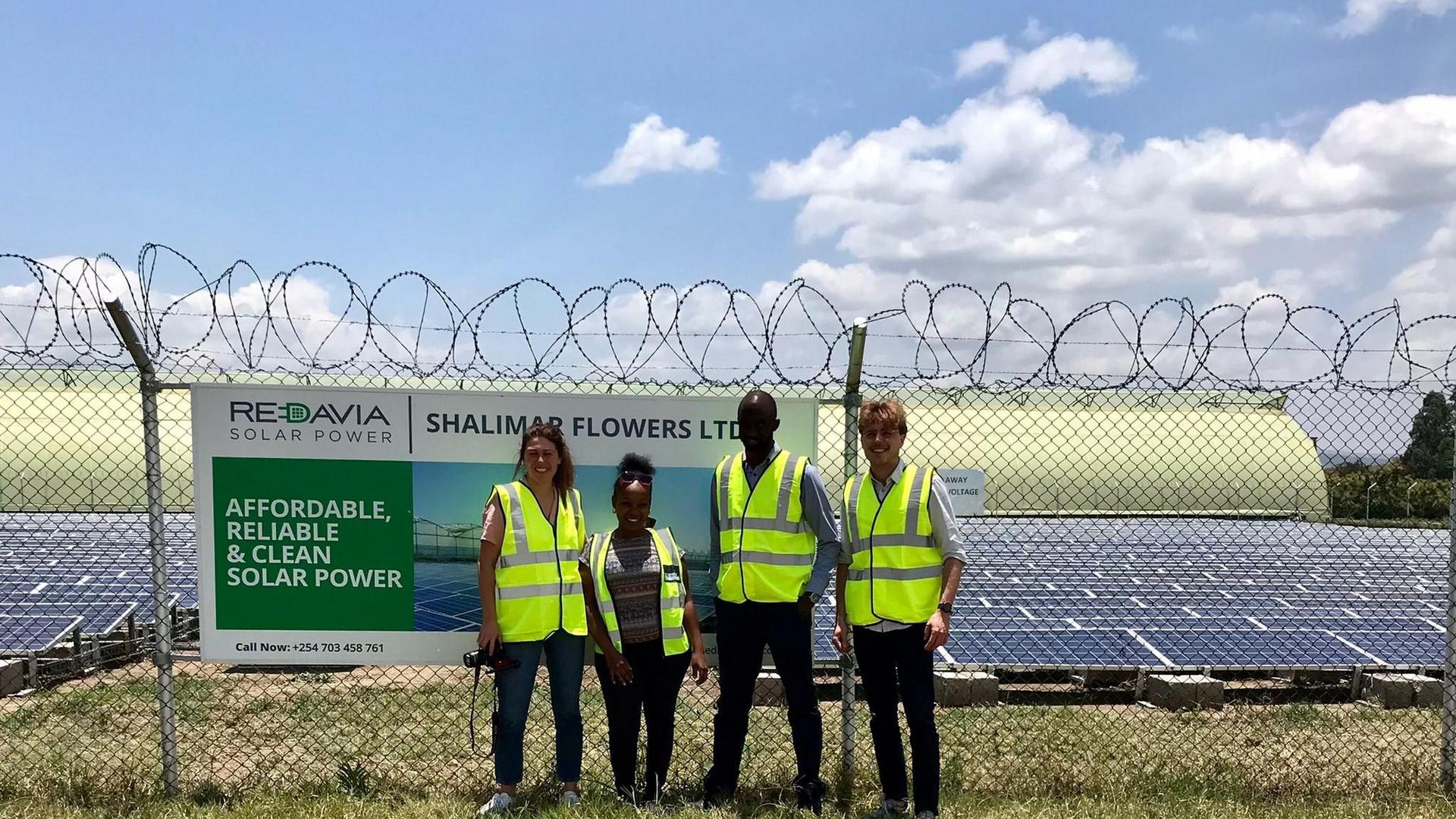
5 benefits of solar energy for a Kenyan flower farm

Written by Lynn Hamerlinck on 6 January 2022
A two-hour drive outside the Kenyan capital of Nairobi, you find the lush Nakuru County, located on the shore of Lake Naivasha. The area's primary industry is agriculture, especially floriculture. Together with my colleague Adriaan, I had the opportunity to visit Shalimar Flower Farm, one of Redavia's clients. The farm covers 350 hectares of land and grows roses and vegetables, which are then packed locally and exported to over 35 countries worldwide.
We were accompanied by Ann Karimi, Group Head of Marketing and Sales Support at Redavia Solar, and Victor Senkomo,who is their Senior Application Engineer. While Adriaan and Victor discussed technical challenges, Ann and I exchanged about the reality clients face and the impact Redavia solar farms are creating.
REDAVIA offers solar power plant leasing services and deployed a 428 kWp solar power system at this particular flower farm. That’s 1,500 solar panels lined up. A local Redavia specialist manages the installation, operations, and maintenance of the solar farm once the unit is on-site. Shalimar is currently Redavia's biggest solar power plant yet deployed in Kenya and one of the largest solar-powered farms in the region.
Operational Manager Julius showed us the impact of the solar energy on the farm
It was the first time for Adriaan and I to visit a solar farm in operation, and we were glad to have Julius, Operational Manager at the Shalimar Flower Farm, to show us around the whole site. "Implementing solar energy has changed the possibilities for growth for the farm and community of Naivasha tremendously," he says.
Here’s the impact we saw first-handed during our visit:
1. Reduction on Energy Costs
The high cost of electricity and frequent power outages are one of the major challenges the farming industry in sub-Saharan Africa faces. Redavia tackles both by offering flexible lease agreements for solar units with minimal upfront investment. For the flower farm in particular, the solar units help reduce costs on the energy bill while providing a constant supply of clean energy during daylight hours. The unit also supports existing power structures by supplementing the utility grid or on-site diesel generators. It works for the Shalimar Flower Farm, as they record remarkable savings from their solar generation system which allows the farm to grow sustainably.
Ann, Adriaan, and Victor at the biggest Redavia solar power plant in Kenya
2. Pumping Water with Solar Energy
A pretty obvious requirement for flowers to grow and blossom is water. On the farm site, there’s a huge water reservoir to water the plants and vegetables. Lake Naivasha being only a couple of kilometers away, is the perfect source for the reservoir. Pumping water from the lake used to consume a lot of electricity. Now that the pump runs on solar power from their solar unit, the farm can cut a huge cost off the electrical bill.
3. Cooling Warehouses with Solar Energy
Unlike us, the employees in the warehouses were well-equipped with cold storage suits to protect them from the freezing temperatures inside. While being packed, the freshly picked roses and vegetables are kept cool until their arrival in the respective buyers’ countries to ensure they stay fresh longer. Before installing the solar plant, these cold warehouses used to be the most significant energy-consuming areas of the farm.
Fairtrade roses ready for transportation
4. Build Extra Greenhouses
With the money saved by switching to solar energy, the farm was able to invest in extra greenhouses to grow more flowers and vegetables. In one of the newest greenhouses, we met Florence, who was hard at work. This flower magician propagates and harvests different varieties of roses. The plants need two weeks to sprout and another 53 days before being harvested.

Florence: “I always carry my flowers like a baby!”
5. Create Employment
More greenhouses mean more employees. Every greenhouse employs 30 people, and in total, 1,500 people from the Naivasha community work at the farm. There is a good mix of gender farm-wide with a majority of women working in the green- and packhouses and men in the technical departments.
We met Felix while he was taking care of the solar panels. He is 21 years old and has worked at the flower farm for one year now. He met Victor from Redavia when the solar plant was being installed and was assigned to take care of the site under the supervision of Julius. Felix takes care of the solar panels in the mornings by cleaning them and weeding the vegetation below the panels. His passion is to fix things, so when it gets too hot outside around noon, he heads to the garage to help fix cars and machines. “I hope to gain more experience and become the new Julius one day,” he said when I asked him about his goals.
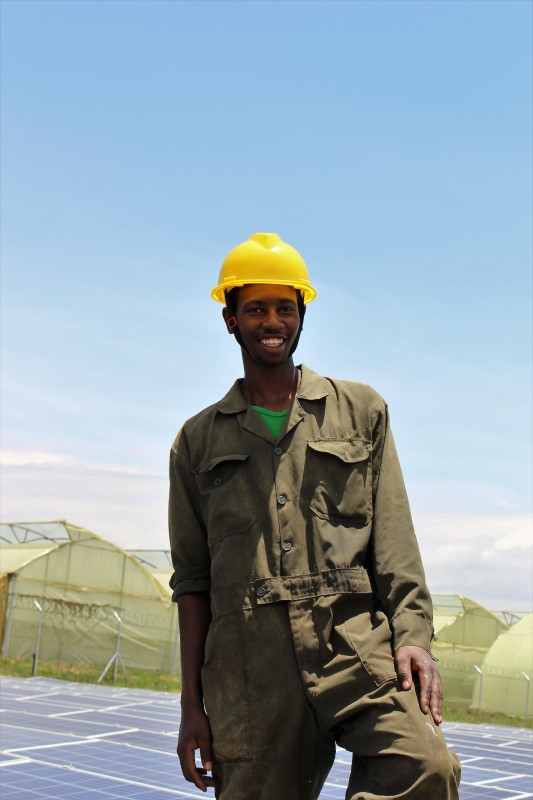
Felix: “It’s my job to take care of the solar panels.”
More solar for larger companies
It was quite impressive to see the impact of a solar plant on this company. Not only does solar energy in this way turn around the environmental impact of a large flower farm, but it also creates a significant social impact as it opens doors to more decent employment in a local community.
To enable further sustainable development in the value chain, REDAVIA is also working with transport companies, mainly for powering their cooling infrastructure near JKIA airport in Nairobi. Cargo logistics, as known, would still benefit greatly from more sustainable options.
Currently, Redavia is working hard to grow its operations in Kenya, and Lendahand is contributing to its success. Ann Karimi says: “Thanks to the crowdfunding of Lendahand, Redavia has been able to support several businesses in Kenya and Ghana, creating jobs and also reducing operational costs for clients. And with that, clients have been able to do a lot of expansion of their businesses. We look forward to more of this support because there is a lot more we can do.”
Asante Sana Ann, Victor, and Julius, for your hospitality!
Keep an eye on our projects page, or turn on your email notifications, so you don’t miss new projects that impact local communities in emerging markets.
